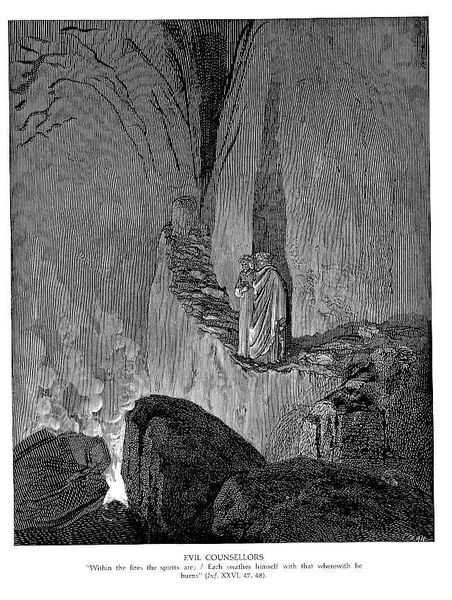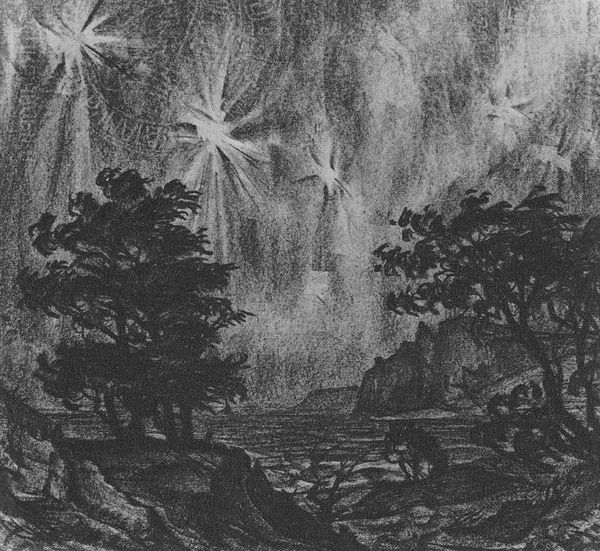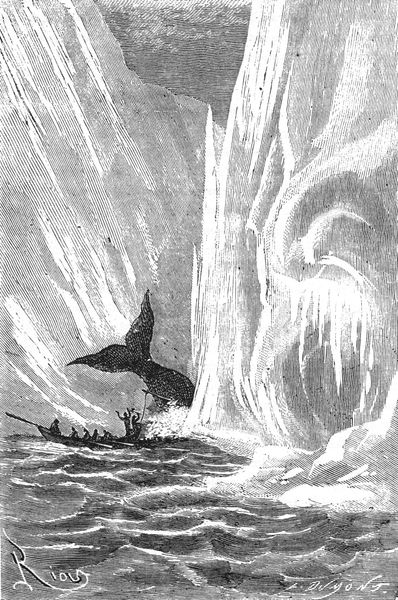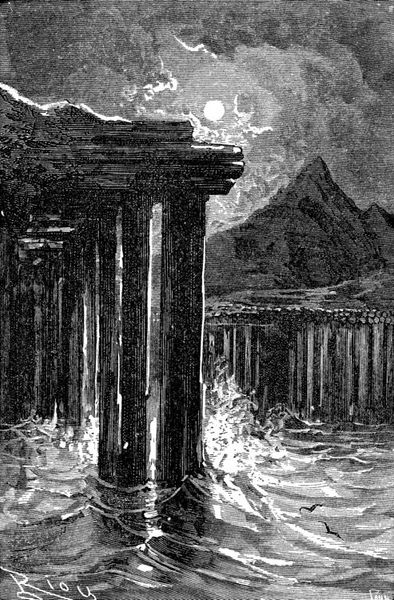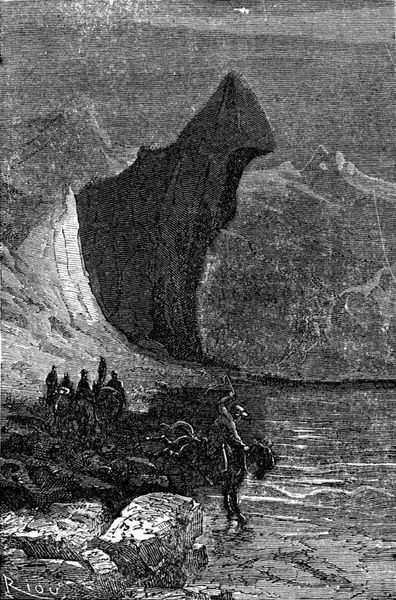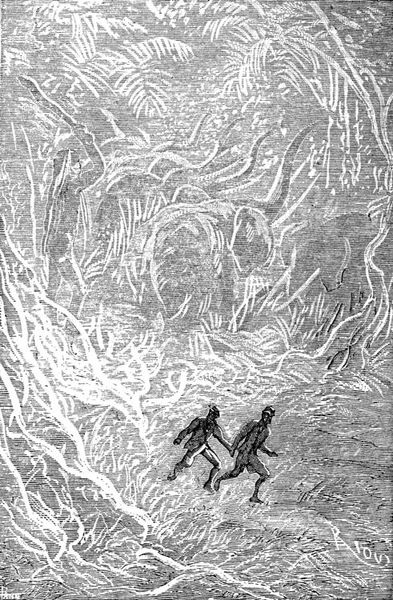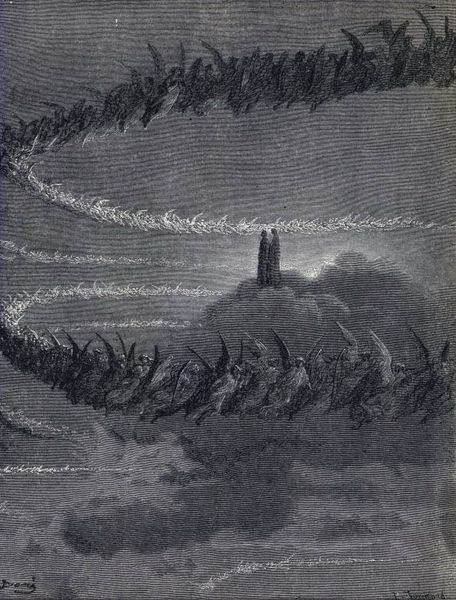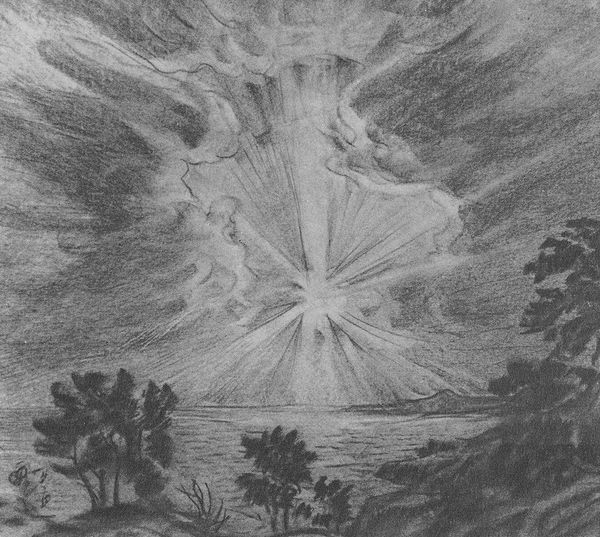
Copyright: Public domain
Edouard Riou created this image to illustrate Jules Verne's 1864 novel, "Journey to the Center of the Earth", printed in France. It presents a pivotal scene where explorers witness a spectacular subterranean phenomenon. Consider the cultural context: 19th-century France was captivated by scientific exploration and discovery. Verne's novels, and Riou's illustrations, fed this public appetite. What were the politics of imagery during this time? This image speaks to the themes of enlightenment, knowledge, and colonial expansion. But also consider how these images are created and consumed. Illustrated novels were a form of mass media, shaping popular perceptions of science and the unknown. What social conditions made this kind of artistic production possible? The rise of the illustrated press, advancements in printing technology, and a growing middle-class readership are all crucial factors. To better understand this image, one might delve into the history of scientific illustration, the publishing industry, and the cultural reception of Verne's novels. This reminds us that art’s meaning is always shaped by its historical, social, and institutional contexts.
Comments
No comments
Be the first to comment and join the conversation on the ultimate creative platform.
